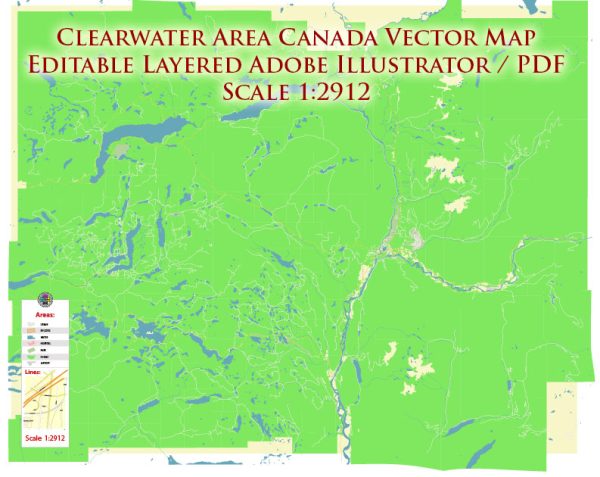Clearwater is a small town located in the North Thompson Valley of British Columbia, Canada. Its history of urban development is closely tied to the region’s natural resources, transportation routes, and the development of the Canadian Pacific Railway.
- Early Indigenous Presence: Before European settlement, the area was inhabited by the Secwepemc (Shuswap) First Nation, who had a deep connection to the land and utilized its resources for their livelihood.
- European Exploration and Fur Trade: The exploration of the North Thompson Valley began in the early 19th century when fur traders and explorers, often in the employ of the Hudson’s Bay Company, ventured into the area in search of valuable fur-bearing animals.
- Gold Rush Influence: The discovery of gold in the 1860s in the nearby Cariboo region brought an influx of prospectors and settlers to the area, leading to increased economic activity and the establishment of trade routes.
- Railway Development: The completion of the Canadian Pacific Railway in the late 19th century was a significant factor in the development of Clearwater. The railway provided a crucial transportation link, facilitating the movement of people and goods through the region.
- Logging and Forestry: The abundance of timber in the surrounding areas contributed to the growth of the logging and forestry industry. Logging camps and sawmills became essential components of Clearwater’s economy.
- Agriculture: The fertile land in the North Thompson Valley supported agriculture, and farming activities became an integral part of the local economy.
- Official Incorporation: Clearwater was officially incorporated as a village on August 14, 2007. Before that, it was part of the Thompson-Nicola Regional District.
- Tourism and Outdoor Recreation: With its proximity to Wells Gray Provincial Park, known for its stunning waterfalls, hiking trails, and outdoor activities, Clearwater has become a hub for tourism and outdoor recreation, further contributing to its development.
- Modern Infrastructure: Over the years, Clearwater has developed modern infrastructure, including schools, healthcare facilities, and community services, to meet the needs of its residents.
- Cultural Heritage: The town has also worked to preserve its cultural heritage, with initiatives to celebrate and showcase its history through museums, historical sites, and community events.
Clearwater’s history of urban development reflects the broader patterns of economic development and resource utilization in the region, from its early Indigenous roots to its role in the fur trade, gold rush, and subsequent growth tied to transportation and resource industries. Today, it continues to evolve as a vibrant community with a focus on tourism, outdoor recreation, and sustainable development.


 Author: Kirill Shrayber, Ph.D.
Author: Kirill Shrayber, Ph.D.